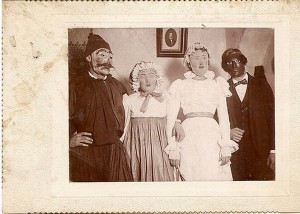As the semester begins to draw to a close, with finals just starting to loom on the horizon, I keep finding myself looking back on my classes and realizing how much work I’ve actually done in such a short few months. Some classes are even starting to take shape in their meaning and value, becoming more than just homework and projects and exams. CAS 137H is one of those classes, to my intense surprise. Thinking back to the beginning of the semester, I can remember and break down the class into specific assignments:
1. Civic engagement speech
2. Rhetorical Analysis paper
3. Paradigm Shift paper
4. TED talk
5. Controversy video project
In a list format, the projects seem so disconnected and unrelated. Even when we began progressing through assignments, I cannot pretend that I understood what the point of completing them was. I was merely going through the motions of the class.
However, in all my other classes, where was a moment of clarity when everything came together, and CAS went the same way. I think my moment of clarity occurred somewhere in writing and practicing my TED talk. I can’t tell exactly what made me realize it, but I felt as if everything I’d worked toward in class so far had been in preparation for my TED talk. I had already practiced and analyzed my speaking skills through our first speech, and later during in-class speech exercises. My analysis and organizational skills had been reviewed and improved through the various papers we had written. All of these skills I implemented into writing and performing my TED talk, which I felt showcased all of my improvements nicely. I felt more lively and outgoing, as more well-spoken and organized during my TED talk, without notes, than I had during my first speech with notecards! Having realized this, I see the skill sets that CAS 137H has helped me to develop.
Additionally, I appreciate the RCL content that this class has incorporated all year. I initially saw “Rhetoric and Civic Life” as an abstract and meaningless thought process designed without any intent of implementation into the real world. Today, I feel that though the textbook makes RCL seem flat and lifeless, allowing students to explore RCL topics through some of the various projects we did helped further interest in RCL give it context in the real world. I personally explored “slactivism” as a specific example in RCL, and it gave the textbook readings of civic engagement much more meaning.
I enjoyed struggling a bit with the public speaking, and learning college writing skills through feedback on the papers I wrote for this class. Now as it draws to a close, I’m interested to see what next semester will hold. Though my peers in the class will be the same for the most part, the content of the class will most likely shift slightly from its current angle. With this in mind, I’m ready to shift from CAS 137H to ENGL 138T and whatever the next semester holds!










